Main menu
Common skin conditions

NEWS
Join DermNet PRO
Read more
Quick links
Author: Amy Stanway MBChB, Registrar, Department of Dermatology, Waikato Hospital, Hamilton, New Zealand, 2002. Updated by Dr Jannet Gomez, Postgraduate student in Clinical Dermatology, Queen Mary University London, United Kingdom; Chief Editor: Dr Amanda Oakley, Dermatologist, Hamilton, New Zealand, December 2015.
A staphylococcal infection is a common bacterial skin infection.
Staphylococci (‘staph’) are a common type of bacteria that live on the skin and mucous membranes (for example, in the nostrils) of humans. Staphylococcus aureus (S aureus) is the most important of these bacteria in human diseases. Other staphylococci, including S epidermidis, are considered commensals, or normal inhabitants of the skin surface.
About 15–40 per cent of healthy humans are carriers of S aureus, that is, they have the bacteria on their skin without any active infection or disease (colonisation). The carrier sites are usually the nostrils and flexures, where the bacteria may be found intermittently or every time they are looked for.
Despite being harmless in most individuals, S aureus is capable of causing various infections of the skin and other organs. S aureus infection is common in people with frequent skin injury, particularly if the skin is dry. Staph skin infections are seen most commonly in pre-pubertal children and certain occupational groups such as healthcare workers. But they may occur for no obvious reason in otherwise healthy individuals.
Most staphylococcal infections occur in normal individuals, but underlying illness and certain skin diseases increase the risk of infection. These include:
S aureus bacteria are classified as Gram-positive cocci based on their appearance under a microscope. They may occur singly or grouped in pairs, short chains or grape-like clusters. They are usually facultative anaerobes, that is, they are capable of surviving at various levels of oxygenation, and are generally very hardy organisms.
They are only able to invade via broken skin or mucous membranes, hence intact skin is an excellent human defence. Once they have invaded they have various ways to avoid host defences. They:
Staphylococcal skin infection can present in a variety of ways:
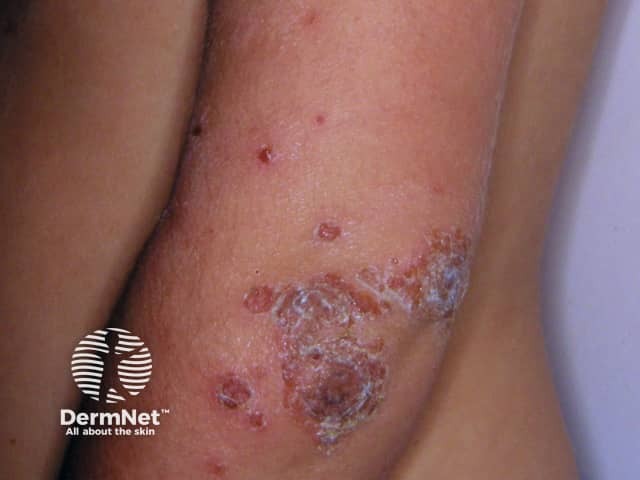
Impetigo
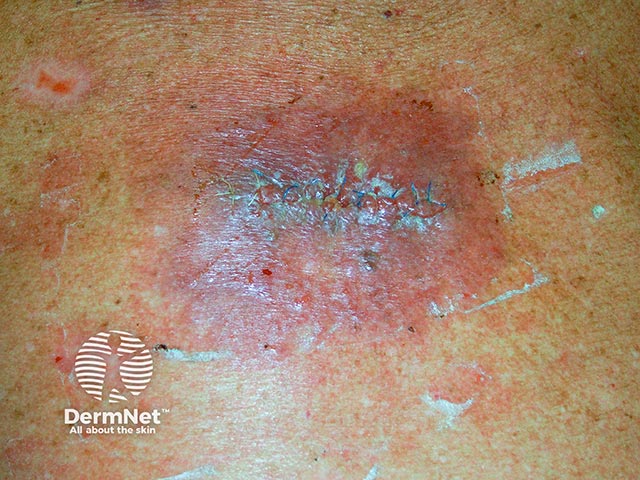
Wound infection
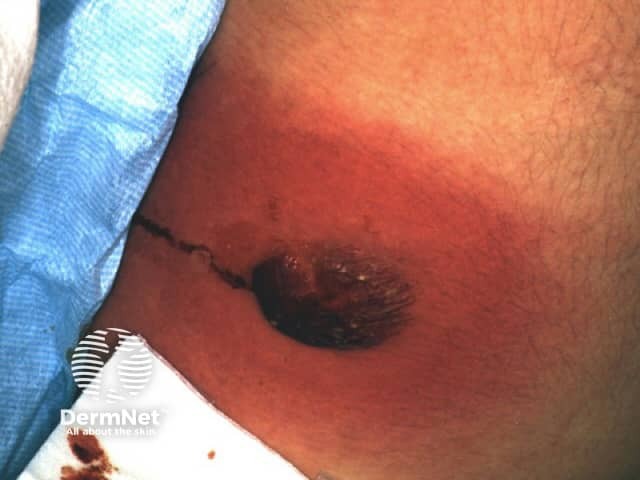
Abscess
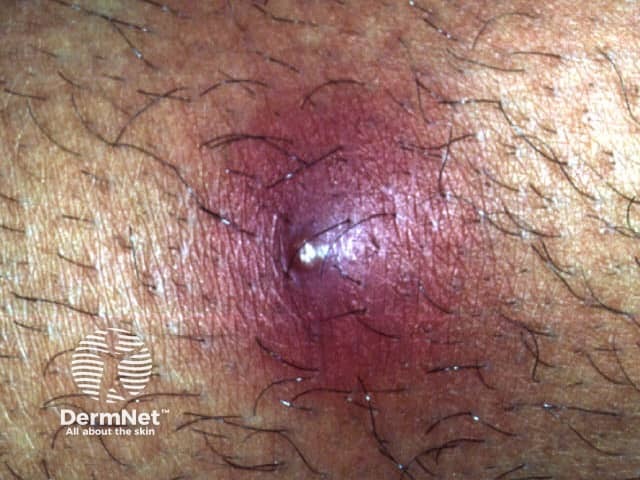
Boil

Scalded skin syndrome
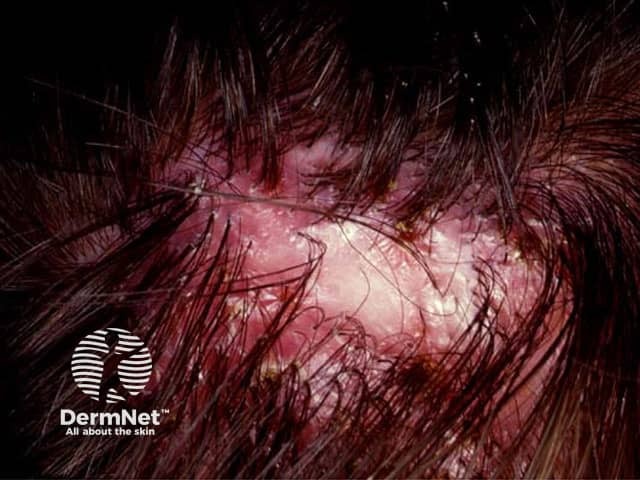
Folliculitis decalvans
See more images of staphylococcal skin infection
Skin disease due to toxins produced by the bacteria include:
Staphylococcal toxins can also cause food poisoning.
The diagnosis of staphylococcal skin infection is often clinical. If there are difficulties in diagnosis, or first-line treatment fails, the diagnosis can be confirmed by a positive laboratory culture of a swab from the infected site or blood culture.
In staphylococcal intoxication, there may be no viable bacteria to culture and the diagnosis may be made retrospectively on the basis of a blood test demonstrating an immune response (seroconversion) to toxins following a compatible illness.
The treatment of staphylococcal infection includes:
Staphylococci are becoming increasingly resistant to many commonly used antibiotics including penicillins, macrolides such as erythromycin, tetracyclines and aminoglycosides.
Penicillin resistance in S aureus is due to production of an enzyme called beta-lactamase or penicillinase. Methicillin (meticillin) and flucloxacillin are lactamase-resistant penicillins so are the antibiotics of choice in most staphylococcal skin infections. Unfortunately, there is now increasing methicillin resistance (MRSA).
Penicillins with a beta-lactamase-inhibitor such as amoxicillin + clavulonic acid may be used to treat S aureus infections and are sometimes effective against bacteria resistant to flucloxacillin. These antibiotics have a broad range of action against several bacteria and are best reserved for patients with mixed bacterial infections.
Patients who are allergic to penicillin are most reliably treated with vancomycin, although for minor infections macrolides such as erythromycin may be adequate. Macrolide resistance is also high among S aureus but macrolides may be taken by mouth whereas vancomycin requires intravenous administration. Other options include clindamycin and rifampicin.
Due to widespread antibiotic resistance, it is better to prevent staphylococcal infection where possible.